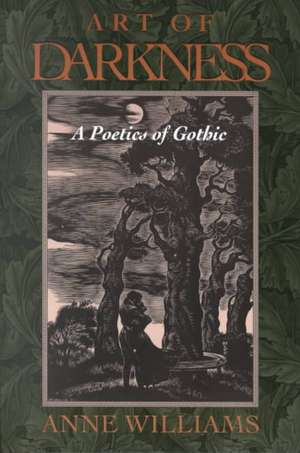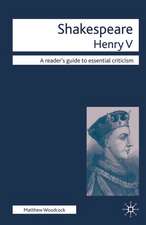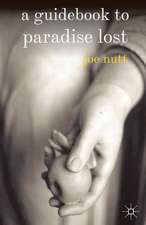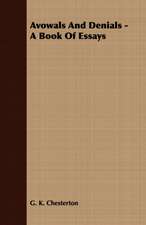Art of Darkness: A Poetics of Gothic
Autor Anne Williamsen Limba Engleză Paperback – 12 iul 1995
Art of Darkness is an ambitious attempt to describe the principles governing Gothic literature. Ranging across five centuries of fiction, drama, and verse—including tales as diverse as Horace Walpole's The Castle of Otranto, Shelley's Frankenstein, Coleridge's The Rime of the Ancient Mariner, and Freud's The Mysteries of Enlightenment—Anne Williams proposes three new premises: that Gothic is "poetic," not novelistic, in nature; that there are two parallel Gothic traditions, Male and Female; and that the Gothic and the Romantic represent a single literary tradition.
Building on the psychoanalytic and feminist theory of Julia Kristeva, Williams argues that Gothic conventions such as the haunted castle and the family curse signify the fall of the patriarchal family; Gothic is therefore "poetic" in Kristeva's sense because it reveals those "others" most often identified with the female. Williams identifies distinct Male and Female Gothic traditions: In the Male plot, the protagonist faces a cruel, violent, and supernatural world, without hope of salvation. The Female plot, by contrast, asserts the power of the mind to comprehend a world which, though mysterious, is ultimately sensible. By showing how Coleridge and Keats used both Male and Female Gothic, Williams challenges accepted notions about gender and authorship among the Romantics. Lucidly and gracefully written, Art of Darkness alters our understanding of the Gothic tradition, of Romanticism, and of the relations between gender and genre in literary history.
Building on the psychoanalytic and feminist theory of Julia Kristeva, Williams argues that Gothic conventions such as the haunted castle and the family curse signify the fall of the patriarchal family; Gothic is therefore "poetic" in Kristeva's sense because it reveals those "others" most often identified with the female. Williams identifies distinct Male and Female Gothic traditions: In the Male plot, the protagonist faces a cruel, violent, and supernatural world, without hope of salvation. The Female plot, by contrast, asserts the power of the mind to comprehend a world which, though mysterious, is ultimately sensible. By showing how Coleridge and Keats used both Male and Female Gothic, Williams challenges accepted notions about gender and authorship among the Romantics. Lucidly and gracefully written, Art of Darkness alters our understanding of the Gothic tradition, of Romanticism, and of the relations between gender and genre in literary history.
Preț: 269.35 lei
Nou
Puncte Express: 404
Preț estimativ în valută:
51.55€ • 53.25$ • 42.90£
51.55€ • 53.25$ • 42.90£
Carte tipărită la comandă
Livrare economică 25 martie-08 aprilie
Preluare comenzi: 021 569.72.76
Specificații
ISBN-13: 9780226899077
ISBN-10: 0226899071
Pagini: 319
Ilustrații: 5 halftones, 1 table
Dimensiuni: 152 x 229 x 20 mm
Greutate: 0.44 kg
Ediția:1
Editura: University of Chicago Press
Colecția University of Chicago Press
ISBN-10: 0226899071
Pagini: 319
Ilustrații: 5 halftones, 1 table
Dimensiuni: 152 x 229 x 20 mm
Greutate: 0.44 kg
Ediția:1
Editura: University of Chicago Press
Colecția University of Chicago Press
Cuprins
Acknowledgments
Introduction: Gothic Fiction's Family Romances
1: The Nightmare of History: Acting On and Acting Out
2: The House of Bluebeard: Gothic Engineering
3: Pope as Gothic "Novelist": Eloisa to Abelard
4: Symbolization and Its Discontents
5: The Nature of Gothic
6: Family Plots
7: Nightmere's Milk: The Male and Female Formulas
8: Male Gothic: Si(g)ns of the Fathers
9: Demon Lovers: The Monk
10: Why Are Vampires Afraid of Garlic?: Dracula
11: The Female Plot of Gothic Fiction
12: The Male as "Other"
13: The Fiction of Feminine Desires: Not the Mirror but the Lamp
14: The Eighteenth-Century Psyche: The Mysteries of Udolpho
15: Dispelling the Name of the Father
16: An "I" for an Eye: The Rime of the Ancient Mariner
17: "Frost at Midnight": (M)others and Other Strangers
18: Keats and the Names of the Mother
Epilogue: The Mysteries of Enlightenment; or, Dr. Freud's Gothic Novel
Appendix A: Inner and Outer Spaces: The Alien Trilogy
Appendix B: Gothic Families
Appendix C: The Female Plot of Gothic Fiction
Notes
Bibliography
Index
Introduction: Gothic Fiction's Family Romances
1: The Nightmare of History: Acting On and Acting Out
2: The House of Bluebeard: Gothic Engineering
3: Pope as Gothic "Novelist": Eloisa to Abelard
4: Symbolization and Its Discontents
5: The Nature of Gothic
6: Family Plots
7: Nightmere's Milk: The Male and Female Formulas
8: Male Gothic: Si(g)ns of the Fathers
9: Demon Lovers: The Monk
10: Why Are Vampires Afraid of Garlic?: Dracula
11: The Female Plot of Gothic Fiction
12: The Male as "Other"
13: The Fiction of Feminine Desires: Not the Mirror but the Lamp
14: The Eighteenth-Century Psyche: The Mysteries of Udolpho
15: Dispelling the Name of the Father
16: An "I" for an Eye: The Rime of the Ancient Mariner
17: "Frost at Midnight": (M)others and Other Strangers
18: Keats and the Names of the Mother
Epilogue: The Mysteries of Enlightenment; or, Dr. Freud's Gothic Novel
Appendix A: Inner and Outer Spaces: The Alien Trilogy
Appendix B: Gothic Families
Appendix C: The Female Plot of Gothic Fiction
Notes
Bibliography
Index














